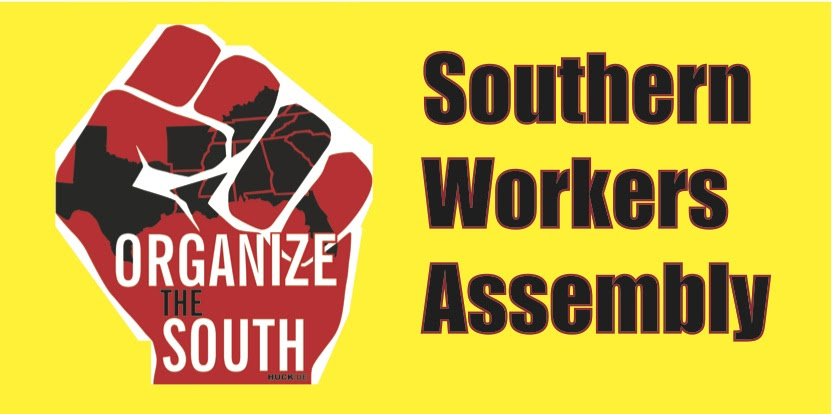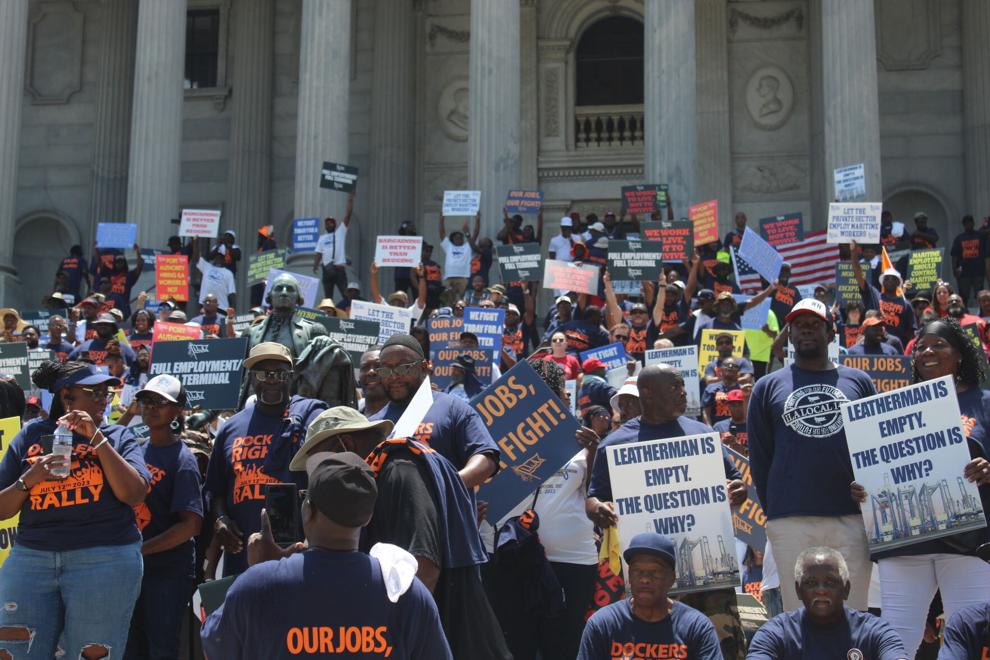“[Charleston, SC is] the place that imported more enslaved Africans than anywhere in this country,” Leonard Riley, a longtime dockworker and leader of International Longshoreman’s Association (ILA) Local 1422, said in a video posted to the local’s social media earlier this year. “We were the cargo on the ships that came into the harbor. And now, we control the cargo coming through here.”
This quote by Riley captures what makes the strike by the ILA and the power of the union so significant – it is at once both an expression of worker power and of the long struggle for freedom and self-determination for Black workers, particularly in the U.S. South.
The Southern Workers Assembly expresses our full solidarity with the 65,000 members of the International Longshoreman’s Association on strike up and down the East Coast and the Gulf, from Maine to Brownsville, TX. We urge other workers and community members to join picket lines if you live near a port city.
Longshore workers play a vital role in the functioning of the global capitalist economy, and thus have a tremendous amount of power to leverage. Five of the top ten busiest ports in the U.S. by volume are located on the East and Gulf Coasts, and four of those five are in the South. More than three-fifths of container shipments of goods come through East and Gulf Coast ports. The strike is estimated to cost shippers around $5 billion per day, and a one day stoppage at any port can take nearly a week to clear out. The last time there was a coast-wide strike was in 1977.
The strike is the result of the greed of the shippers alliance, the United States Maritime Association (USMX), which has been raking in record profits since the pandemic, yet refuses to meet the wage demands by the ILA to address staggering inflation that has eroded workers’ paychecks. In a report released by the ILA, they noted that Maersk – the world’s largest shipping company and the target of a campaign to end their shipment of weapons to the Israeli government – reported a 56% increase in revenues between 2021 and 2022, bringing in more than $82 billion.
The ILA is also holding the line against efforts by USMX to introduce more automation into the loading and unloading of container ships, resisting a similar trend across industries to replace jobs with robots and other job-killing technology. This fight centers particularly around the port in Mobile, Alabama, where the ILA says that USMX introduced automation in violation of their contract. The ILA’s success in stopping automation in this struggle will have bearing on struggles by workers in other industries facing a similar threat from their employers who seek only to maximize their profits. Ultimately, the prospect of automation comes down to a question of worker control of the production process.
When railroad workers rejected a tentative agreement and declared their intent to strike in late 2022, the Biden administration intervened, forcing a contract on the workers and depriving them of their right to strike. So far, the federal government has said they do not plan to invoke the Taft-Hartley act to intervene similarly in this struggle by dockworkers, but USMX and other companies are doing everything they can to pressure the government to act on their behalf. It will take a broad movement standing with dockworkers to hold the line and keep the federal government at bay.
Prior to the Civil War, the back-breaking and difficult work of loading and unloading ship cargo was performed by enslaved Africans. Later following the military defeat of the Confederacy, work on the docks was still considered a socially undesirable job, and was largely filled by Black workers, who for decades were also specifically targeted for recruitment to these jobs by the ports. However, Black workers began organizing and forming organizations, such as the Longshoreman Protective Union Association (LPUA) in Charleston, SC, once the largest slave port where 40% of enslaved Africans were brought to the U.S. The LPUA – which conducted strikes, pressured shippers to improve wages and other agreements, and built political power – was the predecessor organization to the ILA Local 1422, chartered in 1936.
Today, more than 60% of Black workers live and work in the U.S. South. It is the least unionized part of the country, with roughly the same number of union members in the entire region as in the state of New York. Black workers in particular bear the brunt of low wages, unsafe working conditions, pollution and environmental hazards from big corporations, alongside attacks on voting rights and more.
The ILA has been and will continue to be a critical institution to not only build worker power at a vital juncture of the economy, but also a force for advancing the Black freedom struggle and the fight to build working class organization in the region. Solidarity with dockworkers ! Hold the line until victory!



